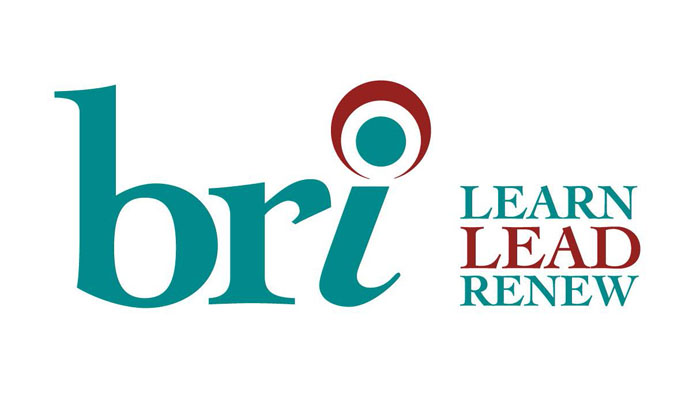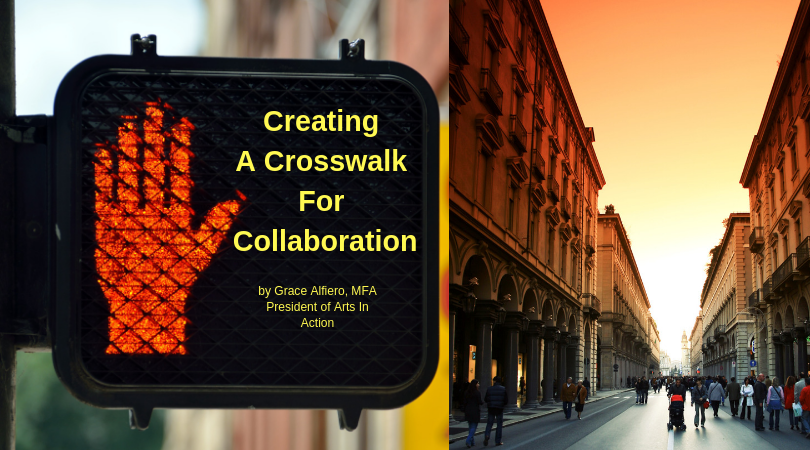Reposted from Arts In Action Blog Post from 9/9/18:
This week I was on a Skype call with a colleague who lives overseas and we were discussing the challenges of building an effective international work team. Knee-deep into our chat, I stated: “it’s almost like we have to build a crosswalk, and develop a safe space for communication, to preserve and keep sacred all of our brainstorms, ideas, and drafts.”
Much easier in theory than in practice! Crosswalks are pretty common in most main street towns and cities in the U.S. It’s a logical and systematic way to get from one side of the street to the other. It’s a visual, manual and efficient system that keeps pedestrians, car drivers and bicyclists traveling in harmony. Crosswalks work perfectly when all the players follow the rules.
In an article written by Tsedal Neeley published in the Harvard Business Review, the tribulations of working with a geographically-spread team were summed up this way, “managers who actually lead global teams are up against stiff challenges. Creating successful work groups is hard enough when everyone is local and people share the same office space. But when team members come from different countries and functional backgrounds and are working in different locations, communication can rapidly deteriorate, misunderstanding can ensue, and cooperation can degenerate into distrust.”
Neeley describes the concept of “social distance” being a major factor that often affects teams that are separated geographically. He defines social distance as the degree of emotional correlation among staff. When people on a team all work in the same place, the level of social distance is usually low. On any work teams, people often arrive from different backgrounds, but if they are sharing the same physical workspace, they will interact formally and informally, typically find commonalities, and eventually build trust. They then create a communal understanding of behavior, which influences their propensity to produce successful work product together, but more importantly, they have built a safe place for collaboration.
With global teams, the daily or weekly physical interactions in a work facility are non-existent, so the central dynamic of social distance is affected, meaning work teams will likely need to contribute more energy to building a secure space for interactions where cultural quirks and differences can be safely explored, accepted and ironed out.
Elasticity and an awareness and appreciation for diversity are at the center of succeeding on a global team. Contributing to the creation of a safe space for each team member to weigh in and share is the key to balanced and harmonious project management. Here are some key strategies to keep in mind in order to build your own crosswalk while participating in or facilitating a work team challenged by distance and/or culture:
A.) Listen! Be curious and create a warm environment for others to share by empowering each team member to contribute.
B.) Customize your work style to address cultural differences.
C.) Identify the connection points within the cultures and use them to bridge the gaps and unify the team. Connect, Don’t Correct!
D.) Be aware of social distance and find common ground as much as possible.
E.) Develop guidelines for your communication together, literally pledge allegiance to each other and mutually agree that conversations including brainstorming sessions and idea generation are sacred. Ideas, drafts, and hypotheticals developed during your work sessions should never be used against any team member in the future, and make sure everyone acknowledges the importance of this practice.
These strategies foster a safety net for idea generation and this will act as a birthing room for true growth and progress. Whether your team is collaborating in a city skyscraper in a posh conference room or through video conferencing from their home offices, these tips above will contribute to your company’s crosswalk and some welcomed ingenuity to boot!
Are you part of a global team or are your team members dispersed geographically? Please let me know your tricks of the trade and share a story of how you are handling this challenge.
To read Tsedal Neeley’s full article in the Harvard Business Review, click HERE.


Recent Comments